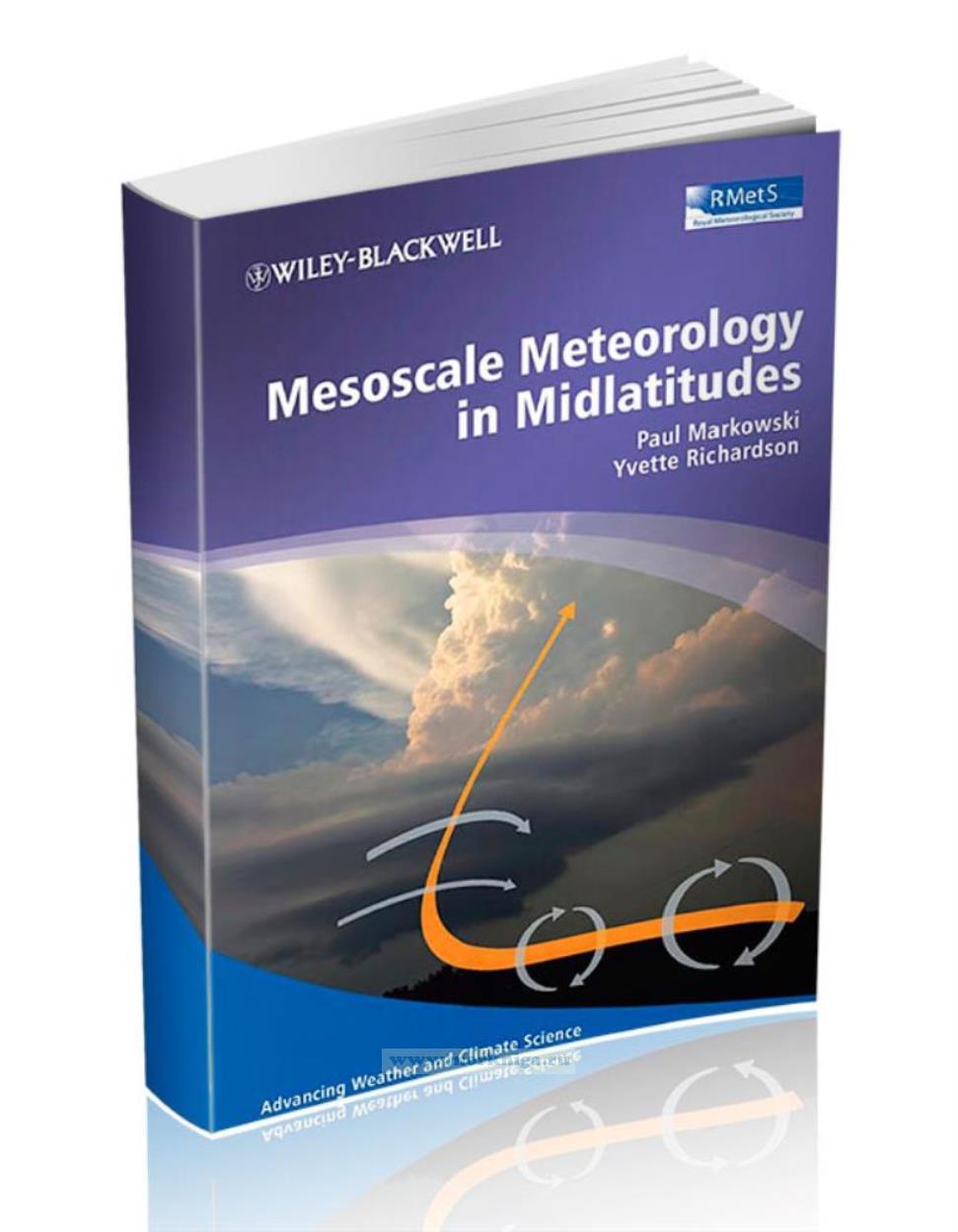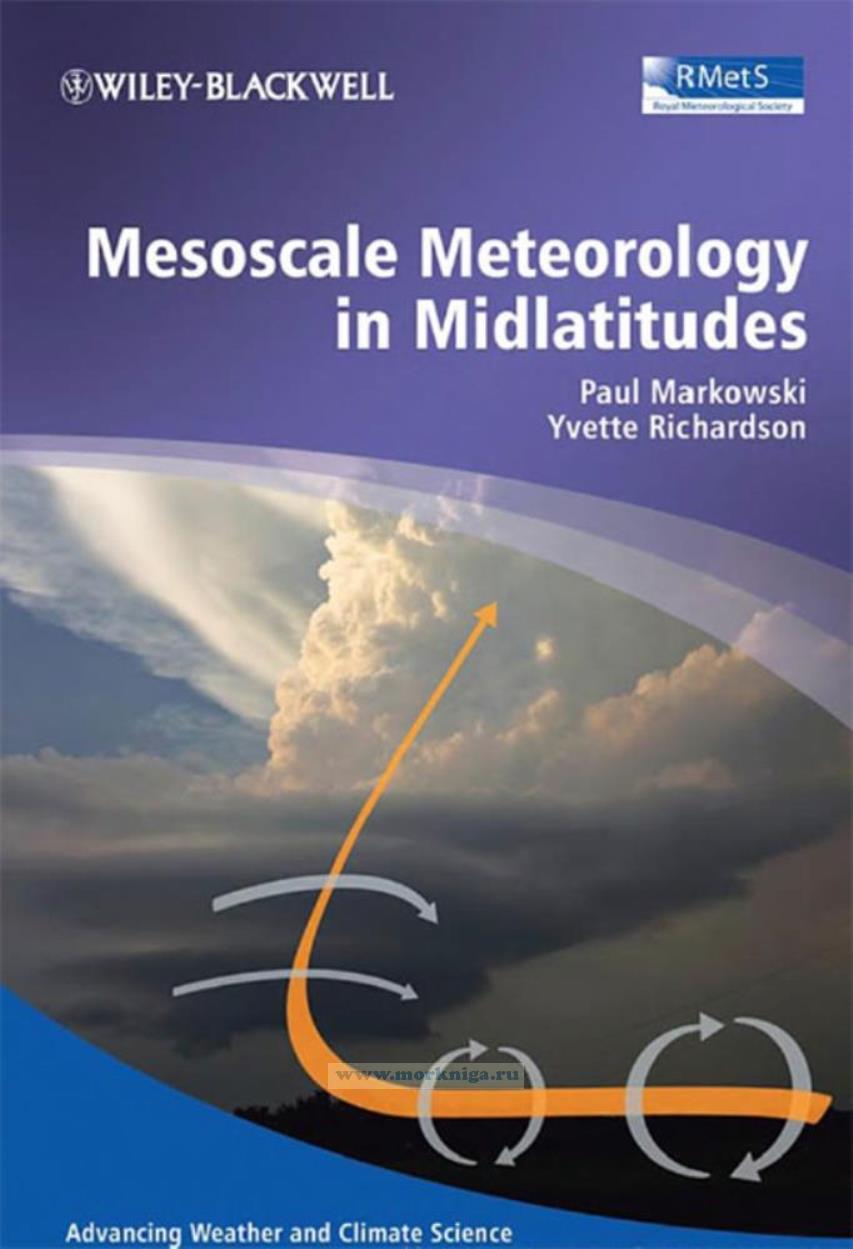Сб с 10 до 16
Mesoscale Meteorology in Midlatitudes/Мезомасштабная метеорология в средних широтах
Книга на английском языке.
Mesoscale meteorology is the study of weather systems smaller than synoptic scale systems but larger than microscale, such as breezes and squall lines. Horizontal dimensions generally range from around few miles to hundred miles. The book restricts focus to midlatitude mesoscale phenomena and is roughly divided in four parts, dealing with definition of mesoscale, basic equations and tools, lower tropospheric phenomena, convection and convectiva systems, orography. It can works as a comprehensive undergraduate textbook or a reference for graduate students, scientists and professionals.
Contents
Series Foreward
Preface
Acknowledgments
List of Symbols
Part I General Principles
1 What is the Mesoscale?
1.1 Space and time scales
1.2 Dynamical distinctions between the mesoscale and synoptic scale
2 Basic Equations and Tools
2.1 Thermodynamics
2.2 Mass conservation
2.3 Momentum equations
2.4 Vorticity and circulation
2.5 Pressure perturbations
2.6 Thermodynamic diagrams
2.7 Hodographs
3 Mesoscale Instabilities
3.1 Static instability
3.2 Centrifugal instability
3.3 Inertial instability
3.4 Symmetric instability
3.5 Shear instability
Part II Lower Tropospheric Mesoscale Phenomena
4 The Boundary Layer
4.1 The nature of turbulent fluxes
4.2 Surface energy budget
4.3 Structure and evolution of the boundary layer
4.4 Boundary layer convection
4.5 Lake-effect convection
4.6 Urban boundary layers
4.7 The nocturnal low-level wind maximum
5 Air Mass Boundaries
5.1 Synoptic fronts
5.2 Drylines
5.3 Outflow boundaries
5.4 Mesoscale boundaries originating from differential surface heating
6 Mesoscale Gravity Waves
6.1 Basic wave conventions
6.2 Internal gravity wave dynamics
6.3 Wave reflection
6.4 Critical levels
6.5 Structure and environments of ducted mesoscale gravity waves
6.6 Bores
Part III Deep Moist Convection
7 Convection Initiation
7.1 Requisites for convection initiation and the role of larger scales
7.2 Mesoscale complexities of convection initiation
7.3 Moisture convergence
7.4 Elevated convection
8 Organization of Isolated Convection
8.1 Role of vertical wind shear
8.2 Single-cell convection
8.3 Multicellular convection
8.4 Supercellular convection
9 Mesoscale Convective Systems
9.1 General characteristics
9.2 Squall line structure
9.3 Squall line maintenance
9.4 Rear inflow and bow echoes
9.5 Mesoscale convective complexes
10 Hazards Associated with Deep Moist Convection
10.1 Tornadoes
10.2 Nontornadic, damaging straight-line winds
10.3 Hailstorms
10.4 Flash floods
Part IV Orographic Mesoscale Phenomena
11 Thermally Forced Winds in Mountainous Terrain
11.1 Slope winds
11.2 Valley winds
12 Mountain Waves and Downslope Windstorms
12.1 Internal gravity waves forced by two-dimensional terrain
12.2 Gravity waves forced by isolated peaks
12.3 Downslope windstorms
12.4 Rotors
13 Blocking of the Wind by Terrain
13.1 Factors that govern whether air flows over or around a terrain obstacle
13.2 Orographically trapped cold-air surges
13.3 Lee vortices
13.4 Gap flows
Part V Appendix
A Radar and Its Applications
A.1 Radar basics
A.2 Doppler radar principles
A.3 Applications
References
Index

